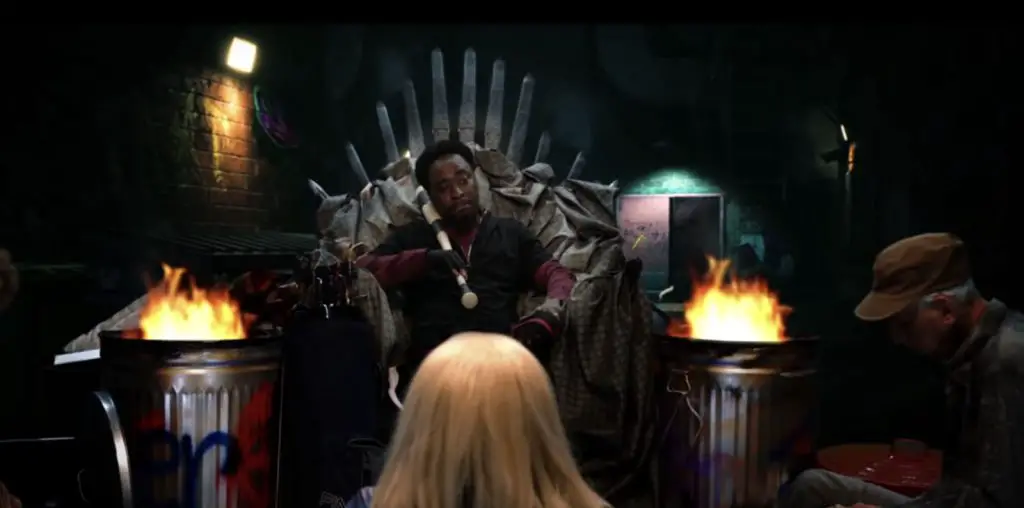
This review was originally published on January 27, 2012…
Beasts of the Southern Wild suggests Days of Heaven by way of Uncle Boonmee Who Can Recall His Past Lives: a dizzying, often fantastical journey across the outer delta as seen through the eyes of a little girl. A latter-day mud doctor, Hushpuppy narrates her tale with equal parts pluck and lyricism, alternating between such lines as “now wasn’t the time to be a bunch of little p*****s” and “we’s who the earth is for.” The balance struck here speaks to one of the film’s primary through-lines: the internal-external harmony between all things living and dead, even and especially those that wouldn’t appear to fit together. To say that Benh Zeitlin’s debut feature (which follows his acclaimed 2006 short Glory at Sea) is more than the sum of his parts would be to erroneously imply that the many diverse facets are always uniquely identifiable as such; everything blends so seamlessly that the film’s very creation seems a marvel in and of itself.
The story is set in a ramshackle community on the wrong side of a Louisiana levee called the Bathtub, a loose affiliation of outcasts and eccentrics floating off the coast whose carnivalesque joie de vivre seems a direct response to their constant hardships. The characters, as with the film itself, are immensely vibrant and lively. Chief among them are Hushpuppy and her father Wink, a weary, ailing man whose every moment of tenderness toward his daughter is tinged with unrest. Wink struggles to instill his own form of strength and independence in the child he knows he won’t always be able to care for, but the difficulty of their relationship is what makes it so moving. Theirs is a hard-earned love that’s clearly vital to both of their survival whether they openly acknowledge it or not. Funerals and feasts alike call for celebration in the Bathtub; only the imminent storm which quite literally heralds a sea change is greeted with more fear than dark whimsy.
As apocalyptic as it is folkloric, the film traces the path of not only Hushpuppy and the Bathtub’s other denizens but also, in an eventually convergent thread, the awakening of a herd of prehistoric beasts both beautiful and ominous called aurochs. Here again one of Hushpuppy’s oft-repeated thoughts come into play: that the universe depends on every piece fitting together just right. Many creatures inhabit the Bathtub, from humans to dogs to alligators and chickens, and none seem to live in fear of one another. And though the aurochs’ appearance at first seems to signal an angry Earth whose restless tumult is by no means confined to storms over the bayou, we’re eventually forced to wonder: are these four-legged giants real or imagined, and does their seemingly inexorable march across soil and ice brand them as agents of a changing world or the last remnants of a dying one? The Bathtub has its own balance, its own harmony, and for the most part it’s entirely unconcerned with the outside (or rather inside, as Hushpuppy and the others are most certainly outsiders) world whose civilization is both foreign and unwelcome to them.
Unspoken sadness courses throughout the movie, but humor punctuates it. This comes not only from the many oddities on display but, more often, Hushpuppy’s ruminative wit. This is a joyful experience, even if it’s also a terribly sad one; the tears it inspires are as much of joy as they are of sorrow. It teems, bursts at the seams with the energy of genuine emotion. To turn your gaze too intently on any one element—the father-daughter relationship, the charging aurochs, the sensory delight—seems to be missing the forest for the trees until you realize that each individual component is as moving on its own as it is when considered alongside all others. Zeitlin, who lives in Louisiana, is undoubtedly focused on the post-Katrina plight of that state and the south as a whole, but his concerns are ultimately more universal than site-specific.
“Ain’t that ugly over there?” Wink says to his daughter while looking upon a nearby city from a makeshift raft; his immediate dismissal of it speaks to how far removed his mindset is from what would most often be considered “normal.” Likewise, Beasts of the Southern Wild itself operates on a different plane. It’s recognizably southern (and certainly gothic in its own way), but there’s an immediacy to it that defies description. It’s in that small space between words and feelings that the film’s most touching moments lie.

This is one of my favorite movies so far in 2012. It’s an amazing work of art.